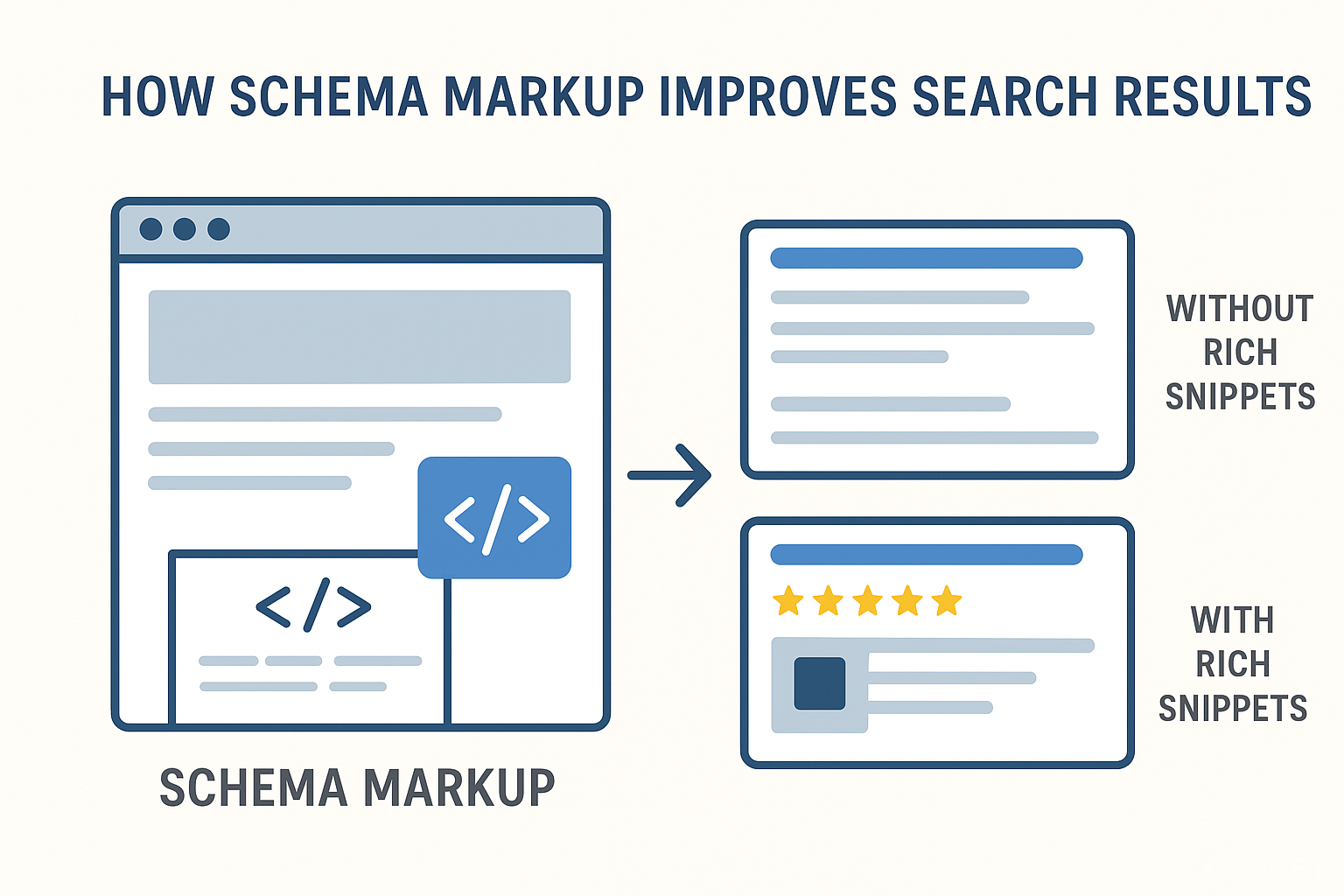
How to Use Shopify Schema Markup to Enhance Your Store’s Search Visibility
Understanding Schema Markup: What It Is and Why It Matters for Shopify Stores
Schema markup (also called structured data) is a special code that helps search engines understand your Shopify store’s content better. Instead of just crawling your pages for keywords, schema tells Google exactly what’s on your site — such as your products, prices, reviews, and availability.
When used correctly, schema markup transforms your plain text listings into rich results — those eye-catching snippets in Google with star ratings, product prices, and even stock status. This can dramatically increase your click-through rate (CTR) and overall visibility.
How Search Engines Interpret Structured Data
Google, Bing, and other search engines use structured data to categorize and rank your content more accurately. For instance, if you sell handmade jewelry on Shopify, schema markup helps Google identify each product, its price, and customer reviews — making it more likely to appear with enhanced product listings.
Key Benefits of Adding Schema to Your Shopify Store
- Increased Search Visibility: Rich snippets stand out more in search results.
- Improved CTR: Schema-rich listings attract more clicks.
- Better User Experience: Breadcrumbs and FAQs improve navigation and trust.
- SEO Boost: While schema isn’t a direct ranking factor, it enhances search performance indirectly through improved engagement.
Types of Schema Markup Every Shopify Store Should Implement
Product Schema: Displaying Product Details and Pricing
This schema helps you showcase product information such as price, stock status, and brand name directly in search results.
Example snippet:
{
"@context": "https://schema.org/",
"@type": "Product",
"name": "Organic Cotton T-Shirt",
"image": "https://yourstore.com/image.jpg",
"description": "Soft, eco-friendly cotton t-shirt for everyday comfort.",
"sku": "OC12345",
"brand": "EcoThreads",
"offers": {
"@type": "Offer",
"priceCurrency": "USD",
"price": "24.99",
"availability": "https://schema.org/InStock"
}
}
Review Schema: Showcasing Ratings and Testimonials
Add review markup to display average ratings and customer reviews in SERPs. It helps build trust and encourages purchases.
Breadcrumb Schema: Enhancing Navigation and CTR
Breadcrumb schema makes your store structure clear to users and search engines, showing a clickable path like
Home > Clothing > T-Shirts > Organic Cotton T-Shirt.
FAQ Schema: Winning More Space in SERPs
Adding FAQ schema can secure extra SERP real estate, increasing your store’s authority and click potential.
How to Add Schema Markup in Shopify (Step-by-Step)
Method 1: Using Shopify 2.0 Theme Editor
- Go to Online Store → Themes → Customize.
- Select Theme Settings → JSON-LD Schema (if available).
- Add schema for products, breadcrumbs, and reviews.
- Save and publish changes.
Method 2: Manually Adding JSON-LD to Shopify Theme Code
- Navigate to Online Store → Edit Code.
- Open the
product.liquidfile. - Insert your JSON-LD markup right before the closing
</head>tag. - Save and preview.
Method 3: Using Schema Apps and Shopify Plugins
If you’re not comfortable with coding, apps like Smart SEO, JSON-LD for SEO, or SEO Manager can automate schema generation.
Advanced Schema for Shopify: Going Beyond the Basics
Adding Organization Schema for Brand Recognition
Organization schema improves brand signals in Google by showing your store logo, social links, and contact info.
Integrating Local Business Schema for Physical Stores
If your Shopify store has a physical outlet, local business schema can enhance your Google Maps and local SEO presence.
Combining Multiple Schema Types Strategically
You can safely use multiple schema types (Product + Review + FAQ) on one page as long as they describe distinct elements.
Validating and Testing Your Shopify Schema Markup
Using Google’s Rich Results Test Tool
- Visit Google Rich Results Test
- Enter your store URL or paste code.
- Review detected structured data types and errors.
Fixing Common Schema Markup Errors
- Avoid missing required fields (like “price” or “availability”).
- Use correct schema types (Product vs Offer).
- Test after every major theme update.
Real-World Case Studies: Shopify Stores Winning with Schema
Example 1: Product Schema Increasing CTR by 35%
A clothing brand added product schema to their catalog and saw a 35% CTR increase due to rich results showing prices and availability.
Example 2: Review Schema Boosting Trust and Conversions
A skincare Shopify store implemented review schema, leading to 20% more sales in three months.
Best Practices for Maintaining Your Shopify Schema Markup
- Keep schema data consistent with visible product details.
- Update markup after changing product info.
- Validate your structured data monthly.
- Automate schema deployment using trusted Shopify apps.
FAQs About Shopify Schema Markup
Conclusion: Future-Proof Your Shopify SEO with Structured Data
Implementing Shopify schema markup is one of the most effective ways to future-proof your store’s visibility. By structuring your data for search engines, you not only make your listings more attractive but also give shoppers a clearer, richer experience — one that builds trust and boosts sales.
For a complete reference, check Google’s Structured Data Guidelines
📧 Stay Updated
Get the latest web development tips and insights delivered to your inbox.




